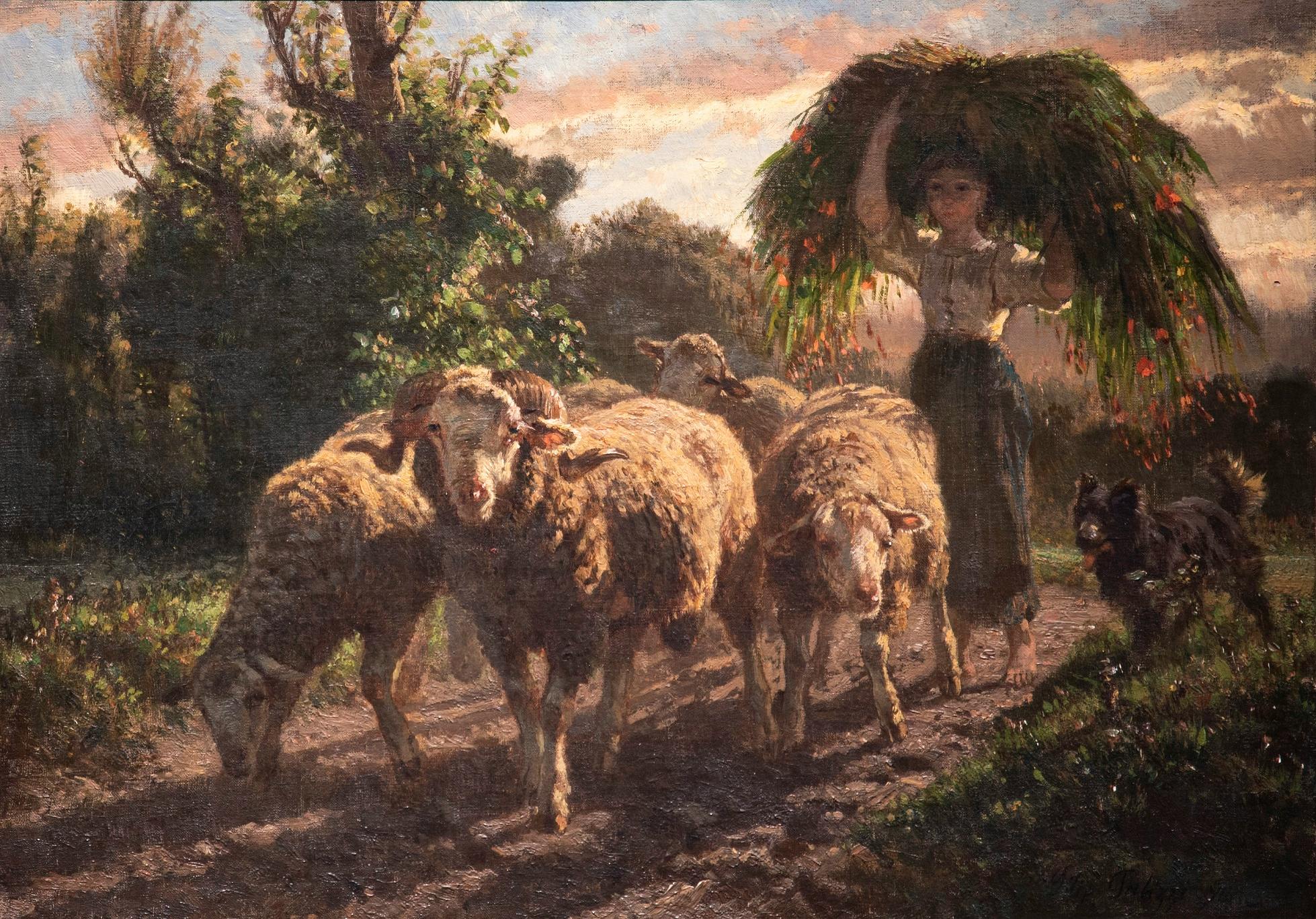The Shepherdess
Filippo Palizzi (Vasto, Chieti 1818- Naples 1899)
Bottom right: "Filippo Palizzi 1874"
One of the painters who portrayed pastoral subjects with an intense poetic sentiment was Filippo Palizzi, artist whose training was influenced by the French current of the Barbizon School.
Born in Vasto, he spent many years of his life between Rome and Naples. He also travelled abroad often, from a very young age, visiting Belgium, the Netherlands, France, Malta, and Moldavia, among others.
He abandoned his academic training when, in 1837, he came into contact with the leading figures of the Posillipo School. Instead, during a trip to the Netherlands, he was impressed by Flemish painting: its strong realism, natural subjects, perfect execution all became a focal point of his art. His three stays in Paris, respectively in 1855, 1865 and 1875, instead allowed him to bring himself up to date with the most innovative artistic currents of the age. Filippo shared his passion for art with the members of his family too, since his brothers, especially Giuseppe (1812-1888) all embarked on artistic careers too, soon moving to Paris. In this way, Filippo was able to maintain a continuous contact with the Parisian art scene. The Shepherdess, exhibited in the Modern Art Gallery of Palazzo Pitti, is an example of Filippo’s unique painting style. Over the years, he specialised in painting animals, which he defined as more genuine and natural than men. At the expense of the female subject, after whom the painting is named, the focus is on the ram and the sheep in the foreground, who are looking curiously towards the spectator, as if seeking to establish a direct contact with their beholder. The artist has used the warm light of the sunset to render the softness of the animals’ fleeces, different from the shaggier hair of the dog who completes the group. Palizzi’s brush stroke varies depending on the object depicted: larger areas of colour outline the shadows that stretch out into the land and the clouds in the sky; thinner brush strokes describe the blades of grass and the leaves on the trees in the tiniest detail. White highlights and dashes of red indicate the delicate petals of the flowers.
The artist’s infinitely precise attention to detail, a distinctive feature of his works, was not always appreciated by the critics of his time. This painting, with another fourteen canvases, was exhibited in Florence in 1962, at the studio of Saverio Altamura. Palizzi, unlike his peers, did not take part in the First Florentine National Exposition, deeming it too academic for his tastes. Indeed, most of his works became part of collections in Rome and Naples, left to the cities in legacy by the artist.
